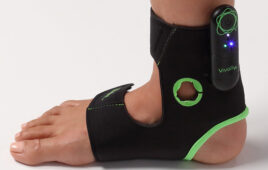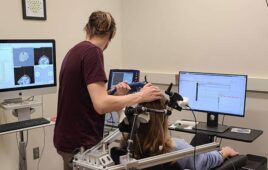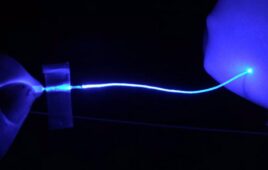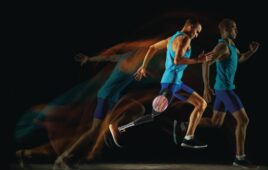
A young child having a MEG brain scan while interacting with her mom. [Image courtesy of paper co-author Rebeccah Slater.]
Researchers at the Sir Peter Mansfield Imaging Center at the University of Nottingham, along with researchers from the University of Oxford and University College London, utilized magnetoencephalography (MEG) technology with the helmet design to measure brain activity in children who are engaging in natural activities. The researchers published the information in Nature Communications.
The researchers think the brain scanner will provide a new way to measure brain function across the lifespan — providing new opportunities to study neurological and mental health conditions in children such as epilepsy and autism, according to a news release from the University of Nottingham.
In the scanner, the researchers used lightweight “quantum” sensors that are designed to allow MEG technology to be reduced to a helmet that can adapt to any head size. It’s possible to place the sensors close to the head, increasing the amount of signal they can pick up when compared to conventional equipment that is further away from the head.
The researchers also developed electromagnetic coils designed to enable accurate control of background magnetic fields, which can allow individuals to move freely as they are scanned.
“The foundations for human cognition are laid down in the first decades of life, but there have always been limited ways to study them due to restrictions in brain scanning technology,” study leader Ryan Hill said in the release. “A particular problem has always been movement and the fact that the large traditional fixed scanners have always required patients to stay completely still. Not only does this fail give an accurate picture of the brain operating in a natural environment, but it also places severe restrictions on who can be scanned, with children representing the biggest challenge.”
“This study is a hugely important step towards getting MEG closer to being used in a clinical setting, showing it has real potential for use in children,” added University of Nottingham MEG research leader Matthew Brookes. “The challenge now is to expand this further, realising the theoretical benefits such as high sensitivity and spatial resolution, and refining the system design and fabrication, taking it away from the laboratory and towards a commercial product.”
“This is a really exciting development, which moves us towards a wearable brain MEG technology that can be used in adults and children,” said Sir Peter Mansfield Imaging Center director Richard Bowtell. “Collaboration with an interdisciplinary team of researchers from three universities has been key to the success of this work.”




